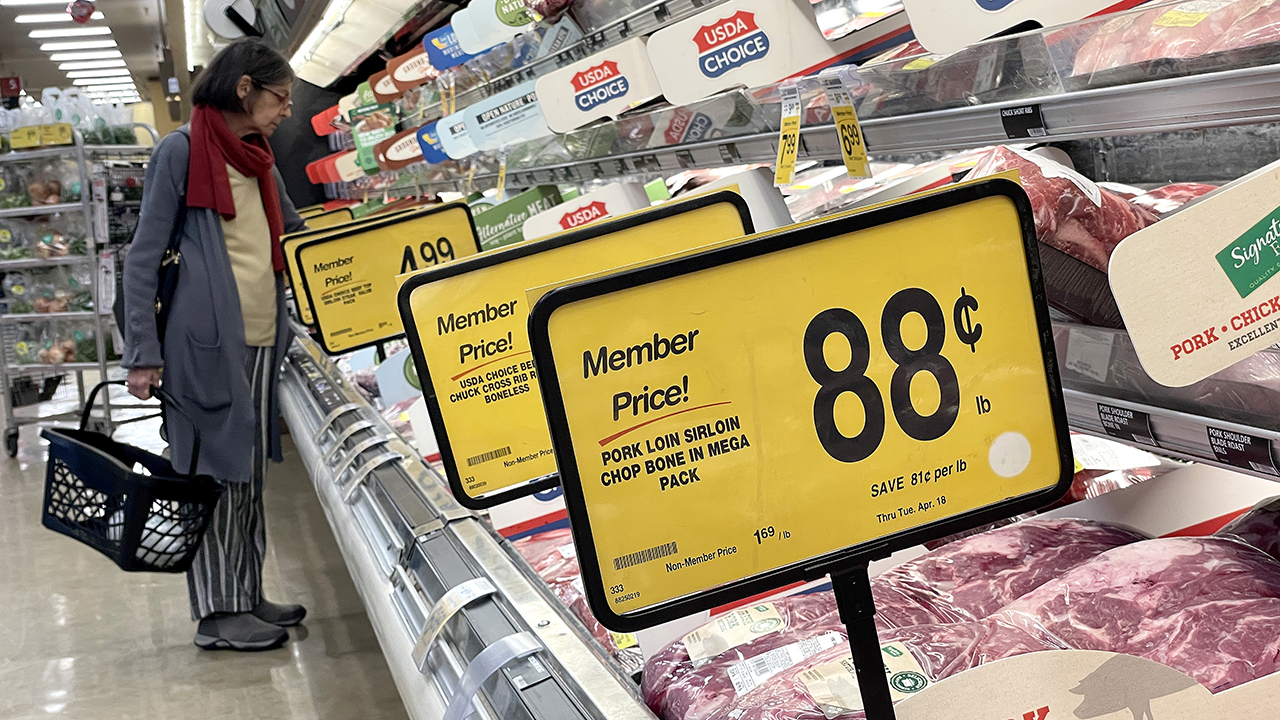By John F. Di Leo, Opinion Contributor
On a recent trip to the grocery store, I picked up a half gallon of orange juice.
Only, it wasn’t a half gallon. Hasn’t been a half gallon in years. I still call it that, but it’s only 52 ounces. Sometime in the past twenty years, the old half gallon of orange juice – 64 ounces – gradually started to shrink. Now they sell a 52 ounce bottle or carton.
At first, it was just one brand, then two, then all of them. And while I haven’t made a careful study of it over the years, once they all standardized on the same slightly smaller size, it was time for someone to be first, and drop it again. It wasn’t a sudden drop from 64 to 52; it was gradual. One wonders how far off is the day when orange juice is sold in a 48 ounce bottle or carton.
Note that this hasn’t happened with everything. Over the past generation, package shrinkage has hit orange juice and grapefruit juice, ice cream and sherbet. It has not hit milk or eggs. You still buy a real half gallon of milk, a real dozen eggs. Nobody’s pushing a ten-count egg carton on you. Yet.
But it has happened with enough products that we have become dependent on our childhood math, or on our cellphone calculators when our math skills fail us. Or we squint to read the fine print that some kind grocery stores add so that you know what it works out to “per ounce” so you can be sure of choosing the best deal.
Over the years – over the decades – we have watched this happen to countless products. When prices go up, that’s easy to notice. When package sizes go down at the same time, that makes the comparisons harder to fully appreciate. And when the government reports its publicly-stated inflation rate, every such change makes it harder for that reported inflation rate to really capture the full impact.
Anti-trust laws in America presumably preclude all this shrinkage being organized through collusion, but the market meets its customers’ desires:
The orange juice makers, or the hairspray makers, or the facial tissue producers, may announce to their vendors that they want packaging that holds a smaller quantity; once that desire is known, the packaging suppliers produce slightly smaller versions of their existing bottles, jars, boxes and cartons. Seeing that these smaller sizes are available, they start ordering them. Before you know it, your grocery store is carrying smaller sizes of everything.
The Left will blame the manufacturers, of course; they believe the villain is always “corporate greed” in some way. “Big Grocery,” they’ll call it, or “Big Agriculture,” or “Big Packaging” – they must be behind this shrinkage.
But they couldn’t be more mistaken.
If the value of the dollar were a constant, then it wouldn’t matter what quantity they’re selling per package. The problem is that the value of the dollar itself isn’t a constant; it’s never been. So the stores and the producers who supply them all need to find some way to make their products relatively affordable, against this backdrop of a plunging economy.
You’ve seen the business pages in recent years. None of this has happened in a vacuum.
When cities mandate a doubling of the minimum wage, as so many now have, that vastly reduces the value of the dollar, and massively increases the cost of doing business for any business that employs entry level employees. We’ve forcibly increased the food producers’ costs, and the packaging producers’ costs, and the grocery stores’ costs. That has to be reflected in product pricing. It has to.
When state or national governments vastly hike the cost of energy, everything that depends on energy sees its own cost of doing business increase, as well. The Biden-Harris regime has methodically shut down American sources of petroleum, natural gas, and coal since January 20, 2021, and both the federal government and numerous states have dedicated themselves to the most outlandish waste of resources in American history: rewarding power companies for littering the landscape with solar panel farms and windmill farms, both of which produce infinitely less energy at geometrically greater longterm cost than the sources they’re replacing. This waste of land and tax dollars loads up the cost of energy, so that companies dependent on energy – that’s the manufacturers, the transportation networks, and the stores we shop at – see their costs jump, more and more each year. That too must be reflected in product pricing. It has to.
When state and national governments invite millions of indigent non-citizens into the country, promising them benefits such as free schooling and healthcare, even free food and housing (all to be provided by the continually squeezed American taxpayer), that too reduces the value of the dollar, and increases the cost of government which is shared by everyone. The more of that burden the private sector must absorb, either through tax increases or government borrowing, the more it devalues the currency. The US Dollar is worth less and less every year.
For generations, among the greatest costs of employment has been the benefits each employer must pay to keep his employees, on top of their salaries. Most employers cover a generous share of their staffs’ health insurance premiums, which have been skyrocketing every year since Obamacare was signed in 2010. Many states have been increasing their taxes on the business sector in recent years, from income taxes to unemployment and workmen’s comp; the employee never even sees these taxes, but they amount to a growing additional withholding tax burden on every employee.
Businesses offer 401K plans to help employees prepare for retirement, and many have raised their matching percentage over the 40 years since this product arrived on the scene. Companies offer bonus plans, profit-sharing rewards, various types of additional investment programs or annual payouts to keep their employees happy. These benefits cost money, and inflation affects these benefits as it does everything else. The amount your employer spends on your health insurance today dwarfs what they needed to spend on it 20 years ago; these increased costs drive up the price of the products they sell. They have to.
Unions strike, citing all this inflation in their negotiations with management. We have witnessed a few major union actions over the past couple of years, haven’t we?
The 2020 supply chain crisis created some temporary spikes in certain product costs, many of which then dropped back down when the supply chain crisis settled back down. So too, the skyrocketing transportation costs of the past two years have been reflected in temporary spikes in product costs on the store shelves. Everything delivered by truck costs twice as much to deliver as it did a few years ago. Assuming a sane administration is returned to the White House, so this current regime’s destructive Executive Orders on energy will be revoked at last, these costs will drop again, and prices will be able to again subside.
Unless of course some unions use this temporary inflation as a justification for huge permanent increases, thereby making it a self-fulfilling prophecy.
And yes indeed, that is exactly what’s happening. The ILWU (the longshoremen’s union at the West Coast seaports), the many railroad unions last fall, the UPS drivers and clerks this summer, the United Auto Workers right now, and who knows how many other unions to come, are all making this very mistake.
It’s hard to blame them. A union has to make the most of the facts at hand to get the most for their members; that’s what collective bargaining is all about. If inflation is high when a contract is up, a union will have to make full use of their best argument.
But even so – it’s not good for the economy, is it?
Because when a temporary cost increase drives a permanent salary increase, thereby effectively setting that otherwise temporary situation in concrete, it’s bad for everybody.
Most of the triggers that drive hyper-inflation can be corrected by wise public policy. Replacing the Biden-Harris regime with practically any sane Republican administration would reverse a lot of these drivers almost instantly.
But the more of our economy we allow to be unionized, the more of that biggest share of product pricing – the cost of the workforce – itself becomes a driver of the hyper-inflation we’re all trying to tamp down.
The American economy is suffering, and with every month that goes by, the eventual recovery becomes more and more difficult, more and more remote.
Copyright 2023 John F Di Leo
John F. Di Leo is a Chicagoland-based trade compliance trainer and transportation manager, writer, and actor. A one-time county chairman of the Milwaukee County Republican Party, he has been writing regularly for Illinois Review since 2009. Follow John F. Di Leo on Facebook, Twitter, Gettr or TruthSocial.
A collection of John’s Illinois Review articles about vote fraud, The Tales of Little Pavel, and his 2021 political satires about current events, Evening Soup with Basement Joe, Volumes One and Two, are available, in either paperback or eBook, only on Amazon.
Don’t miss an article! Use the free tool on this page to sign up for notifications whenever Illinois Review publishes new content!
By Amanda Szulc, Opinion Contributor "Return to Innocence." It is not simply the title of a song by Enigma. It has become a plea — a sober call...
Read moreDetails








